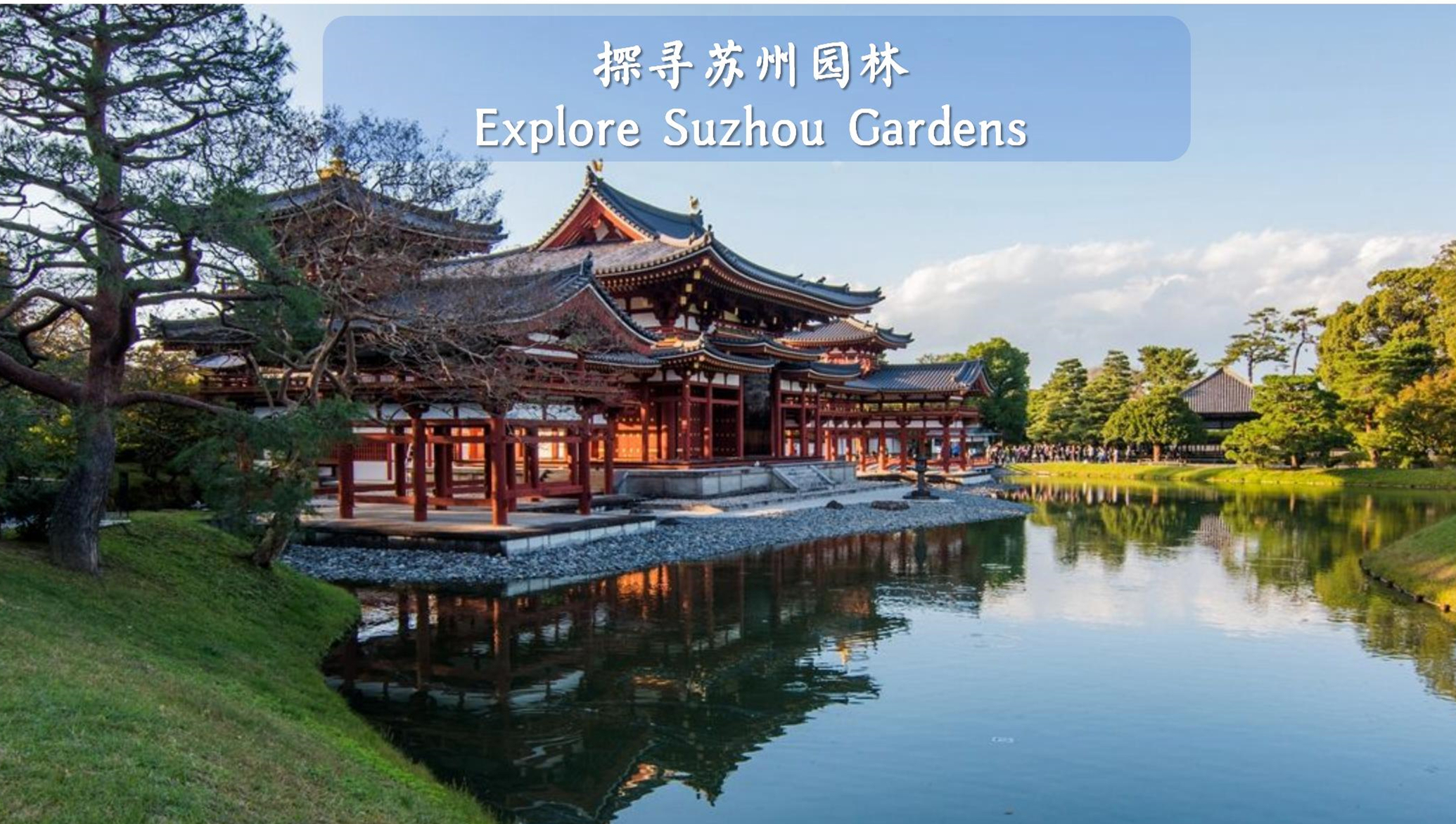Explore Suzhou Gardens
探寻苏州园林

Course Syllabus 课程章节
1Suzhou classical gardens date back to the Spring& Autumn Dynasties, developed in Jin and Tang Dynasties, flourished in the Song Dynasty , and flourished in the Ming and Qing Dynasties. Suzhou is known as the "Garden City" reputation, the domestic private home forest was built in the first 6th century, the end of the Qing Dynasty there were more than 170 gardens inside and outside the city, more than 50 existing. Suzhou classical garden home garden is a place that can be enjoyed, can be traveled, can be lived. The formation of this architectural form is a kind of creation in the densely populated city which lacks natural scenery, which is attached to nature, pursues harmony with nature, beautifys and perfects its living environment. The Chinese philosophy, history and human customs contained in Suzhou classical gardens are a symbol and concentrate of Jiangnan's cultural and historical traditions and local customs, which shows the essence of Chinese culture and has a unique historical position and great artistic value in the history of the world garden. Suzhou classical garden, represented by the humble political garden and the left garden, is known as "reinventing the work within easy reach" and is the leader and pride of Chinese garden culture. Let us follow Mr. Liu Xiaoguang and feel the beauty of Suzhou gardens together.
苏州古典园林溯源于春秋,发展于晋唐,繁荣于两宋,全盛于明清。苏州素有“园林之城”的美誉,境内私家园林始建于前6世纪,清末时城内外有园林170多处,现存50多处。
苏州古典园林宅园合一,可赏,可游,可居。这种建筑形态的形成,是在人口密集和缺乏自然风光的城市中,人类依恋自然、追求与自然和谐相处、美化和完善自身居住环境的一种创造。苏州古典园林所蕴涵的中华哲学、历史、人文习俗是江南人文历史传统、地方风俗的一种象征和浓缩,展现了中国文化的精华,在世界造园史上具有独特的历史地位和重大的艺术价值。以拙政园、留园为代表的苏州古典园林被誉为“咫尺之内再造乾坤”,是中华园林文化的翘楚和骄傲。让我们跟随刘晓光老师,一起感受苏州园林之美。





